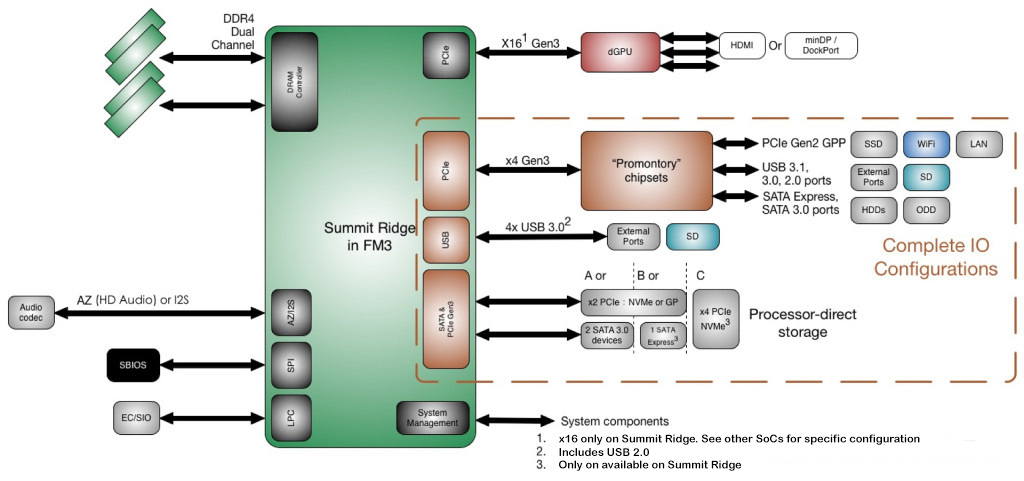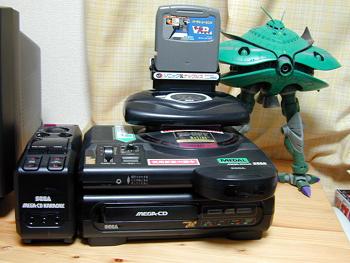PxI Express ''Open" Game Console/Set Top Box
Right now this is all speculation. AMD's Zen has recently taped out, and open source drops are occuring relating to it.
This is an open hardware project shaped around the AMD ''Summit Ridge" APU, due to it's sixteen PCI Express lanes.
A motherboard design will be developed around either a socketed AMD processor, or if unavailable, variants of the BGA processor soldered directly to the board.
The physical design is ROUGHLY as follows:
- External power brick providing 10v-15.8V unregulated power if 16v capacitors are used or >21V regulated power if 24v capacitors are used.
- Likely source will be what is available from http://www.mini-box.com/AC-DC-power-supplies
- Female standard eATX 8 pin 12V connection will be recessed from the rear of the mainboard, perhaps on the bottom, between the two 2.5" SATA 'bays'.
- Motherboard will be responsible for producing all nessicary voltages from the single 12V source. (+5v, +3.3v, and CPU +vcores, but not -15v for rs232 unless absolutely nessicary)
- A Daughterboard design will be provided similar to the PicoPSU from http://www.mini-box.com/DC-DC that snaps onto the 8 pin connector, a drastic simplification to their 20/24 pin design.
- Unregulated power input shall be provided by purchasing an existing http://www.mini-box.com/DCDC-USB-200 module and connecting it to the eATX connector via a pigtail.
- This design should be automotive and airline compatible, as well as being operational from common lead acid or lithium chemistry batteries.
- Any sort of battery charging is out of scope and should be done by third party design.
- Aluminium outer chassis in a shape similar to the Sega Genesis Generation II console layout made from a single cut and folded aluminium sheet, keeping per-unit costs as low cost as possible.
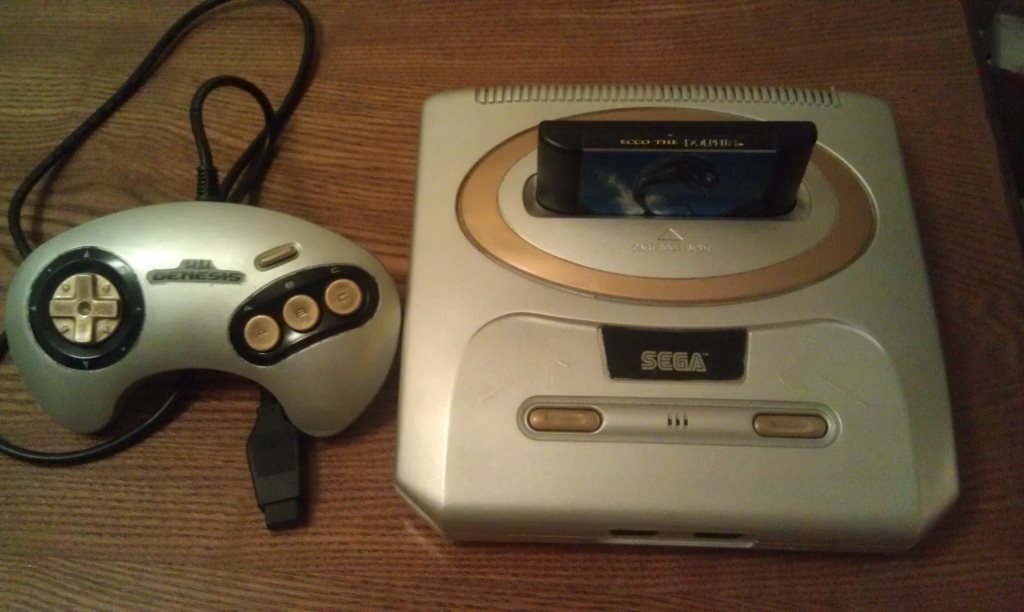
- Chassis bottom shall terminate in either a standard 75mm x 75mm or 100mm x 100mm VESA-style mounting plate, exposing the family of bottom connectors.
- A solid bottom plate will be supplied with the unit, preferably cut or stamped from the same aluminium sheet.
- Product information shall be etched into the aluminium chassis at a location other than the removable bottom plate.
- MiniITX size 170mm x 170mm (6.7 x 6.7 in) motherboard (Or smaller)
- Both sides of the board will be utilized for maximum user expansion.
- Two unpopulated DDR4 SODIMM slots for user memory expansion, requirement of AMD central processor with integrated 2GB/4GB/8GB ''HBM" memory stacks.
- The bottom shall contain no less than two SATA compatible sockets with 12V, 5V, and 3.3V power suitable for mounting existing SATA SSD and 2.5" hard disks upside down.
- They should be mounted as far outboard as possible, preserving the central board area for the bottom of the CPU socket, power daughterboard, and bottom-mounted connectors.
- Two or more standard dual port USB headers shall also be provided on the bottom of the board. It is yet to be determined if these should be 2.0 or 3.0 style headers.
- The top of the board shall contain the processor and a single top mounted female PCI Express X8 socket situated as a ''Cartridge" port would be on a classic game console.
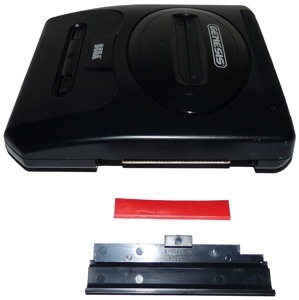
- The right side of the board shall end in a male PCI Express edge, most likely 8 links unless a suitable inexpensive PCIE bridge is found to route 16 links.
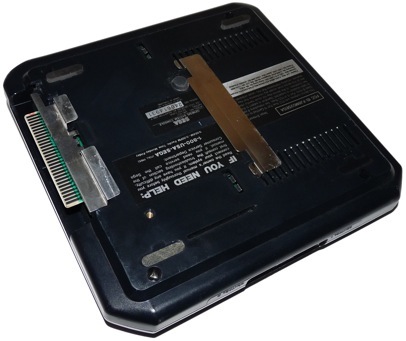
- A U-shaped PCB containing two female PCI Express sockets will be developed to link the main board with an optional expansion chassis directly below.
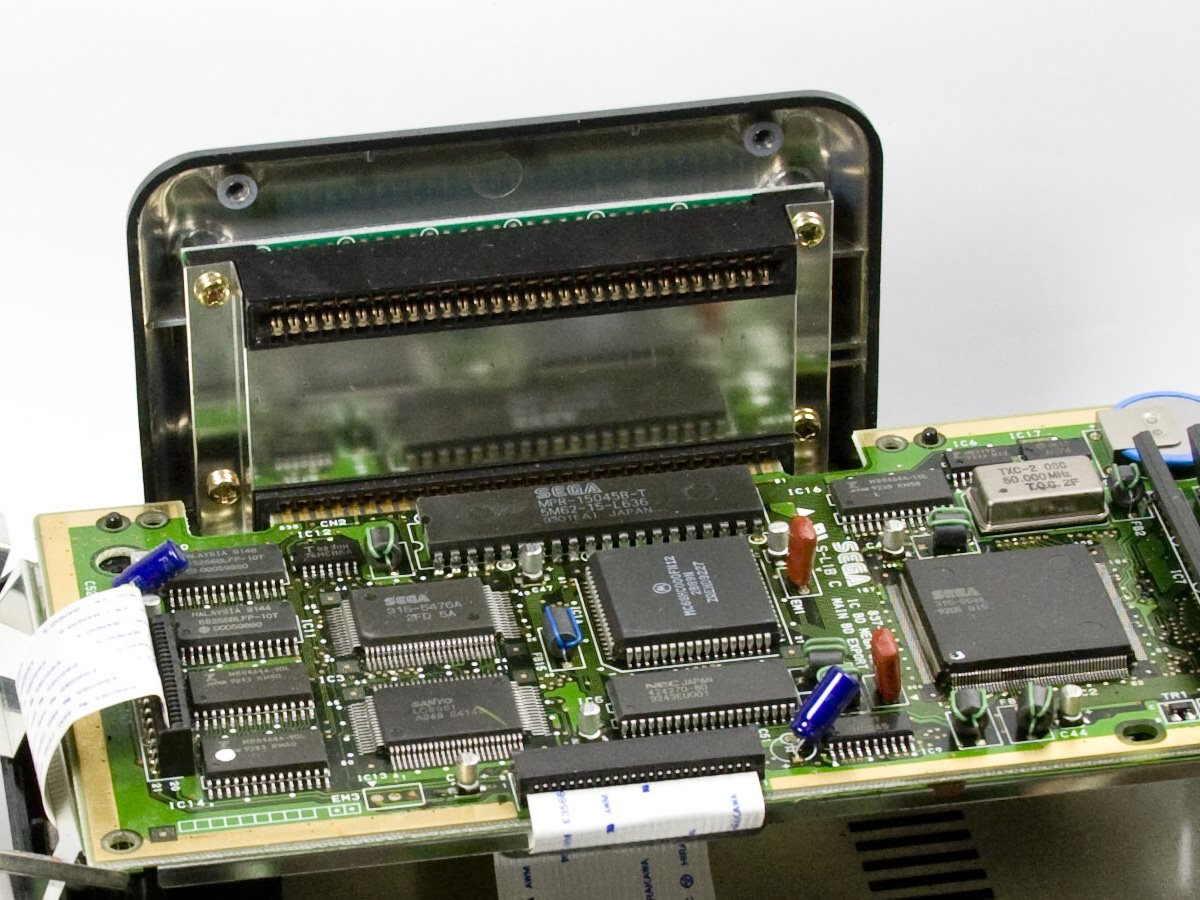
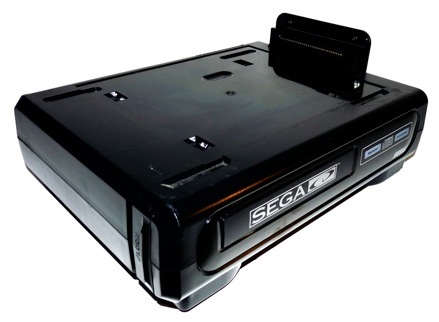
- Wireless shall be provided by an Atheros ath10k driver supported MiniPCI Express adapter. It is yet to be determined which side of the board to place it on.
- In theory, this could be provided by a short "Cartridge", sandwiching one or two minipcie slots between a male X8 PCIe edge and a female X8 socket with six lanes pinned at the top.
- In practice, Built in Wifi must be provided to be in FCC compliance, where a radio and antenna combination must be evaluated as a single 'device' for qualification.
- Various Atheros modules may be qualified for use in the final design. 802.11N shall be considered the minimum acceptable, with 802.11AC being strongly preferred.
- Bluetooth 4.0 Low energy support will be included if available in the selected Atheros modules.
- Otherwise, an inexpensive USB2.0 daughterboard will be mounted to one of the bottom USB headers, likely using a CSR-based radio for maximum support. (See https://www.adafruit.com/products/1327 for an example COTS device )
- No legacy ports shall be provided in the design. No PS/2 Keyboard/mouse, no LPT parallel, no RS232 serial. Plenty of hubs and cheap USB2.0 adapters for that.
- GPIO implimented developer switch, likely based upon removing a physical screw from the motherboard allowing for the separation of two contacts.
- At least one rear output will be MicroHDMI, to allow direct connection of an inexpensive head mounted display such as http://www.vufine.com/
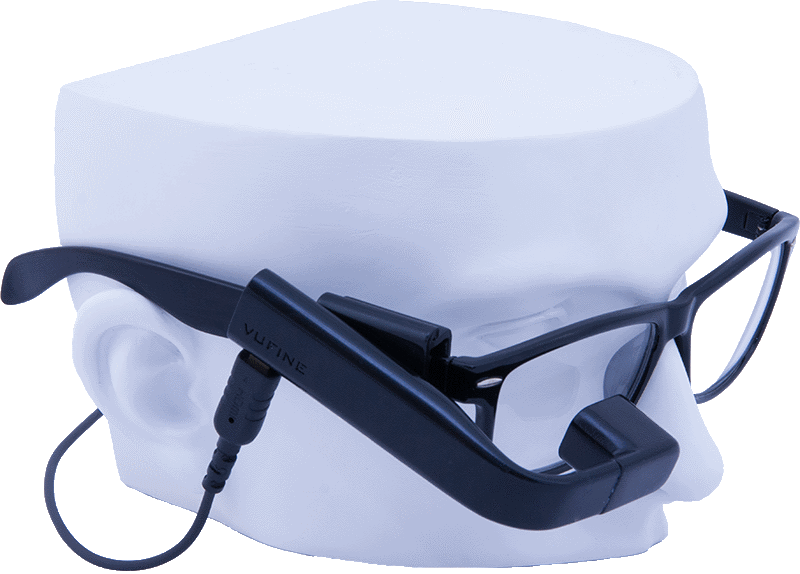
- Four USB type C connectors along the front edge, providing connections to controllers and other user devices such as webcams.
- Four full sized SD Card slots, corresponding with each 'controller' port. These may be provided via 45 degree header in a ''// \\" pattern to give an 'eyebrow' appearance.
- SD Port 1 shall be connected to the processor and optionally used as a trusted platform boot device, port 2, 3 and 4 may be provided by discrete SD to USB controllers.
- A UVC webcam PCB will be designed to plug a COTS HD webcam module into the front controller ports, with an asthetic design to re-use the existing SD slot access indicators as eyebrows.
- A third party project will utilize the final design as a sleek 'robot head', mounting it to a torso-and-limbs through the bottom USB headers and the VESA-mount bottom plate.
- To achieve this asthetic, symmetry must be used for the external design and port layout. In theory, a passive PCIExpress cable can be used to operate discrete GPUs in the chest cavity.
The software design is ROUGHLY as follows:
- Large firmware storage device, partitioned. Potentially an eMMC device, bumping SD port 1 to a discrete SD to USB controller?
- Processor bringup by coreboot, loading blobs from a signed firmware image over 16MB in size. (Nonfree blobs here still?)
- Hypervisor should be resident in firmware, default linux operating system rootfs image is resident in tmpfs as a >1GB squashfs image.
- Initial implimentation will be based upon the Xen virtualization layer, allowing dom0s other than linux to be signed and booted.
- OS-agnostic, but a certain vendor widely known as wintel likely would not boot natively. (But probably work fine as a paravirtualization guest or under HVM with qemu devices)
- Heavy reliance on running signed binaries, and allowing isolated guests to run unsigned, potentially malicious, code of their choice.
- Virtualization Guests are isolated from each other to as strong of a degree as Xen can reasonably enforce.
- OpenVSwitch will provide supervised connectivity of guests.
- Developer switch state will be read, allowing images signed under separate platform keys to be allowed to boot.
- Forethought for supporting for SteamOS as a guest, and providing high performance graphics.
- Forethought for supporting Unity3D as a "platform target", as well as running their Game Editor directly. (see http://blogs.unity3d.com/2015/08/26/unity-comes-to-linux-experimental-build-now-available/ )
- First game console supporting integrated game development tools as a first class platform feature if Unity Technologies plays ball with us.
Another, somewhat unrelated problem:
- Remote management with IPMI 2.0 stinks. Vendors use an ARM core, a licensed Matrox G200 2D graphics core, some fake USB 1.1 devices, and attempt to manage it all via an i2c bus variant called SMBus shared with the host.
- It could be done much better with a Freescale I.MX6, running linux, acting as a PCI Express endpoint, enabling bulk memory transfers. (see https://community.freescale.com/docs/DOC-95014 )
- Wayland 1.9.0 supports linux_dmabuf paving the way for some interesting zero-copy behavior that could be implimented. (see http://lists.freedesktop.org/archives/wayland-devel/2015-September/024303.html )
- In theory, combined with AMD's recent open source radeon driver work this could be the first solution allowing compositing from a ''Real" GPU to a mobile SoC's framebuffer memory by running the wayland protocol on both sides.
- The i.MX6 could composite additional information on top of the GPU output, in a form such as how the Steam Overlay currently operates after a Shift-Tab on PC.
- This would require additional software on both sides, but there's nothing stopping this from becoming a PCI Express card on it's own and providing remote GPU management outside of this project.
- Four SD controllers are provided on the i.MX6 platform. This negates the need for discrete USB to SD adapters for all four SD slots.
- The i.MX6q chip is approximately $50 each or less in small volumes. The i.MX6 DualLite is $32, and the i.MX6 Solo is $25. qty500+ gets it down to $18.12 for the solo.
The datasheets indicates PCIExpress support (see http://www.mouser.com/ds/2/161/IMX6SDLCEC-316634.pdf )
Current Pricing: http://www.mouser.com/Semiconductors/Integrated-Circuits-ICs/Embedded-Processors-Controllers/Processors-Application-Specialized/_/N-a86sh?Keyword=138628814&FS=True&Ntk=P_MarCom
Note: This would be a seriously involved project in it's own right. It's cool to think about, and low cost, but is probably the first thing to get cut from the design.
Various reasons for this would be:
- Freescale declining a production volume order during discovery phase
- Stability problems with driver development (Wayland is still not widely deployed; this may change the situation by providing a 'killer app' hardware demo)
- Excess Bikeshedding over driver structure, when both sides are under FOSS control and can be iterated over time into better interfaces
- CPU Vendor really really hating the idea of sticking someone else's ARM on board to ''manage things"
- Freescale really really hating the idea of being used as someone else's framebuffer implimentation
Product lifecycle information:
- Intended platform support is from a late 2016 launch to late 2020 official end-of-life date.
- Handover of the platform keys to a community group concerned with keeping the platform alive and secure has been planned since day one.
- Hardware should be physically engineered to last 10 years before failing under a ''best case scenario". Preferably, units should die of abuse before old age.
- User accessable external ports should be specified with reinforced connectors rated to at least 100,000 cycles. (USB, HDMI, Ethernet)
- The user is intended to upgrade the unit, but should not be required to do so under most use cases.
- The largest costs anticipated to be associated with providing user upgradability are: DDR4 memory slots & supporting passive components.
The production ODM will already have volume quantity of processor socket on hand. (Which will be the single largest cost in prototyping -- getting individual CPU sockets and not melting them.)
Rational:
For years, I've been getting progressively sicker of the gaming industry; purchasing console after console, breaking them for homebrew use, and watching the manufacturers rapidly close down support for hardware sold before the platform has officially died....
I've watched as people make huge claims ( http://arstechnica.com/gaming/2015/07/ars-reader-so-a-guy-walks-into-my-shop-with-an-infinium-phantom-console/ ) and fail to follow through, or outright fail before they even launch due to making poor technology choices, or choosing overly expensive "bling" features over core functionality.
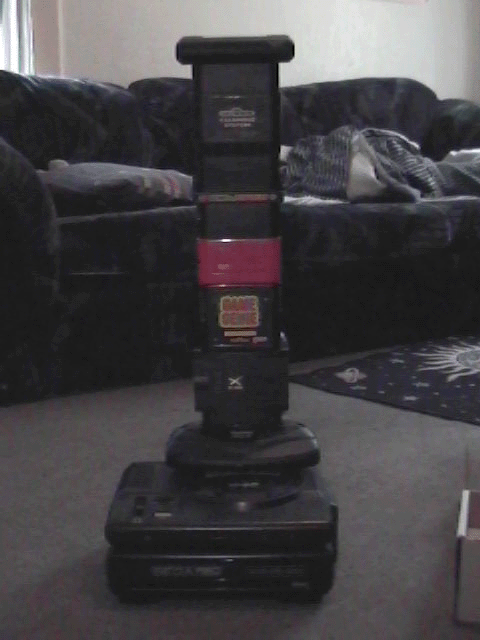 (Spot the Xband modem and win nothing at all...)
(Spot the Xband modem and win nothing at all...)
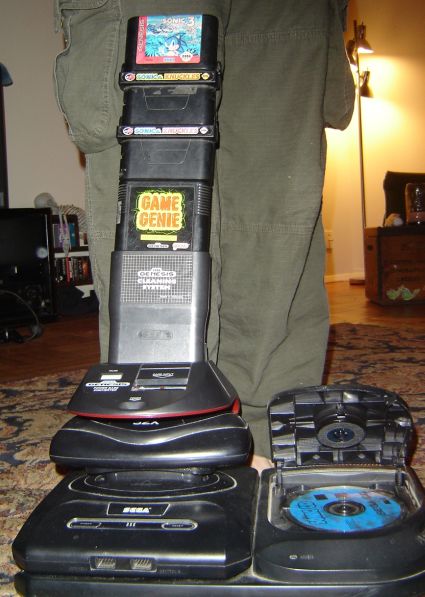
Apple computer moved from the IBM PowerPC to the Intel/AMD64 platform.
The most recent two game console set top boxes from Sony and Microsoft have been powered by an AMD64 processor provided by AMD.
One of them runs a BSD derived OS. So far as I can tell, it's locked up tight with DRM.
But of course, under the BSD license, that's quite all right.
I most recently purchased a triple-A game title called "Watch_dogs", with the intent to play it on my AMD 1100T hexcore with SLI Radeon R7 260X cards.
I purchased said GPU cards because they were supposedly very close to the same silicon that was driving the two game consoles. Surpassed them, actually.
Both in shader core count, and in clock speed. However, what I got was not very playable. First Steam downloaded the game. Then it installed Ubisoft's U-Play service.
Then it downloaded so many updates with u-play, I wanted to cry. Then steam got very angry it's local copy changed, and redownloaded everything.
After the second update cycle with u-play, I was able to launch the game (a day later than when I purchased it)
It crashed after ten minutes of play. I had to deal with updating my drivers, which then caused issues with the operating system.
I still have yet to enter into any of the storyline missions; trying to start them crashes the game.
Despite having two GPUs, each of which is singly more powerful than the game console variant, I am still unable to get playable framerates at 720p.
The console version of the game plays smoothly at 1080p, or so I hear from online reviews.
One aspect of the problem is that the game binary is built for a generic architecture to run on many PCs. Performance drops because of this.
Another aspect of the problem is that the operating system running the game is also not optimized for the hardware; and is built for a generic platform.
This is one issue that is solved simply by having a specification that is tied to a minimum hardware requirement of the AMD family 17h Zen processor and using -march=znver1 for builds targeting the PxI Express platform.
Incidentally, this type of project was pursued once before, and was ultimately successful in launching it's product.
https://www.kickstarter.com/projects/quo/projectq-run-any-os-the-unique-motherboard
They raised $189,451 and approached Gigabyte to provide the motherboard design.
http://quocomputer.com/product-category/motherboard/
As far as I can tell, it's still available for purchase, however it's quite expensive, being an Intel CPU based motherboard.
The design we are operating under does not require an expensive north bridge or south bridge chip, merely a processor socket, some PHY chips to drive ports, the ports and sockets themselves, and the passive components surrounding the PHYs and sockets.
PxI Express should be attainable at a very reasonable cost due to AMD's existing long term pursuit of a true System On Chip design.
Purpouse of the ''Top Slot":
I had a discussion with a local wafer fab about modern nanolithography processes and how it could relate to the old MASK-ROM technology used in classic game consoles. The result of the discussion was that a mask rom in the range of 128GB to 480GB was quite possible and could be likely be done for under $30 a chip. In combination with a PCI express device complex, a flash memory controller could be added to provide writable space for updates, save games, or binary game executables for multiple platforms, while keeping the large graphic and sound resources in mask rom.
This is a modern interpretation of the original golden Legend of Zelda cartridge, with 128KB of mask rom, the nintendo MBC1 page controller, and it's battery-backed 8KB SRAM. (see http://www.computerarcheology.com/NES/Zelda/ for more depth on this concept)
Todo:
[ ] File for California Public Benefit Corporation, allowing donations to be tax deductable
[ ] Find a crowdfunding site that will be acceptable towards this hardware project's requirements
[ ] Crowdfund a minimum of $200,000 to cover prototyping and initial production run
[ ] Find someone willing to provide prototype PCBs for the i.MX6 Board Management Controller design
[ ] Find someone willing to provide prototype PCBs for the motherboard design
[ ] Find an ODM willing to provide production PCBs (Likely someone like Gigabyte, MSI, or Tyan)
[ ] Begin working with prototype board layouts
[ ] Find a pick and place facility willing to populate PCBs if ODM declines volume production
[ ] Order a prototype run of >20 units for core developers/backers
[ ] Begin firmware development on prototype hardware
[ ] Bootstrap Ubuntu Linux 16.04 LTS and selected other distributions
[ ] Finalize board designs
[ ] Initial production run of >1000 units for backers, first come first served
[ ] Repeat production runs
[ ] Improve included software stack
[ ] Work with upstream code developers to port other userspace runtimes such as Android to the hardware
Please see the wiki for more information, or open an issue to start a discussion!
